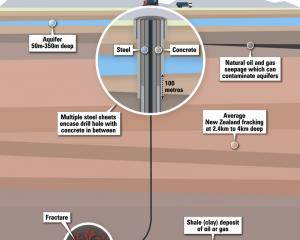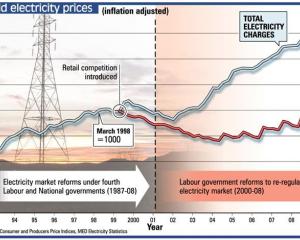An Auckland businessman and some private investors say they have found a way to generate all the power New Zealand is ever likely to need without depleting natural resources.
John Lehmann said the system used underground heat to power generators and had world-wide potential.
The "dry-well power" did not deplete ground water or steam, had no environmental impact and would "last forever, or until the earth cools down," Mr Lehmann said.
He said the system had the potential to eliminate power shortages in New Zealand.
"There is no reason in a couple of years why they should be talking about power shortages.
"We could have more power in this country than we know what to do with."
The system used a 38cm bore to tap into heat underground and drive a generator. Mr Lehmann said the bore would probably need to be 300- to 350-metres deep but the depth of the bore would also depend on the depth of the heat field.
The system could generate power once the temperature had reached 140 degrees Celcius but the ideal temperature would be 300 degrees, Mr Lehmann said.
Power could cost less than one cent a kilowatt/hour to produce which was far cheaper than conventional power generation.
"We know the thing works and we have done all our figures. We even had a prototype running and it works very well, far better than we anticipated."
He said the system could be used wherever heat could be found underground and there were hot spots all around the country.
He said geothermal power fields had a limited life.
"We don't use any ground water and environmentally, we are not blowing steam and nasty minerals through the air.
"We are using ground heat."
He said the generators could be switched on and off at will and were ideal for supplying peak-hour electricity demand.
They could be installed in buildings about 2.5 metres high with minimal impact on the environment.
"It is very, very simple. The people I have been dealing with are quite astonished at the simplicity of it."
Mr Lehmann said within three years the system could be feeding 50 megawatts into the national grid.
He said the cost of installing each unit was still unclear but it could be about $250,000.
He said they already had had interest from the government and overseas power generation companies.





